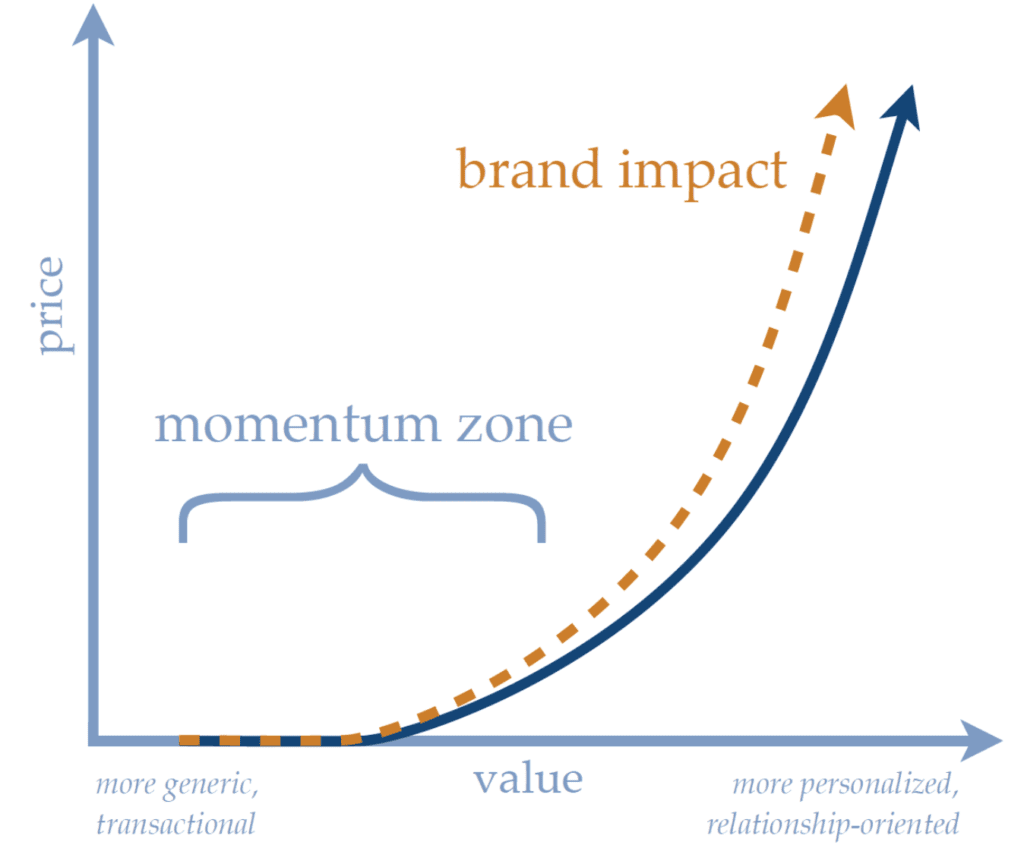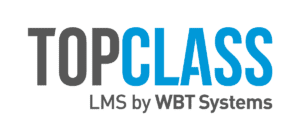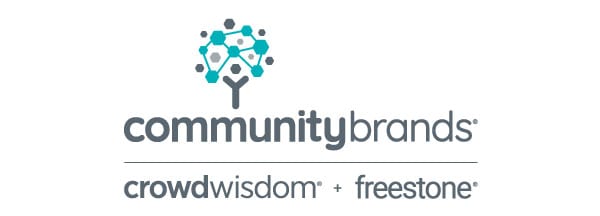
Here’s a question: how would you say most people define marketing?
Our suspicion – based on a lot of experience – is that when most people think of marketing, they think of advertising, or other forms of promotion. But there’s much more to marketing than promotion – and even promotion has more to it than many appreciate.
In this episode, we cover the 4 Ps of marketing – product, pricing, place, and – yes – promotion. We consider each P in detail and, of course, how each one applies in the context of a learning business.
To tune in, just click below. To make sure you catch all of the future episodes, be sure to subscribe by RSS, Apple Podcasts, Spotify, Stitcher Radio, iHeartRadio, PodBean, or any podcatcher service you may use (e.g., Overcast). And, if you like the podcast, be sure to give it a tweet!
Listen to the Show
Read the Show Notes
4 Ps of Marketing
[00:21] – Discussion of the bias that people often have when they think about what “marketing” means.
Marketers and people who study marketing often talk in terms of a “marketing mix,” and promotion is just one part of the most widely recognized 4-part marketing mix.
The other three are product, pricing, and place. Along with promotion, these make up what is usually referred to as the 4Ps of marketing—and those other three Ps simply don’t get the level of attention they deserve.
Really understanding and then leveraging the 4 Ps can make a huge difference in the potential reach, revenue, and impact of any learning business – and the P to start with is product.
1. Product
[02:16] Product is most fundamentally about identifying and creating an offering that meets the needs of your audience and that will result in the outcomes you aim to achieve for your learners and as a business.
In other words, creating something that clearly delivers the desired learning outcomes, that people will buy, and that—as a result—will generate revenue for your learning business.
While product, as part of the marketing mix, addresses obvious areas like features and benefits and the quality level of the offering, it also includes less obvious elements like branding, how you name it and package it, what sort of services and levels of services you provide to support it, and any guarantees you plan to provide.
And, beyond that, the product P also includes making decisions about how and when to update and revise the product over time to meet market needs.
But most people don’t tend to think of these areas as “marketing.”
With elements like features and benefits, for example, it’s easy to think that these are purely the domain of the subject matter experts and instructional designers and developers, but we know that by far the biggest issue learning businesses face is that they create products and then no one buys them—and that’s because they have not applied the marketing perspective to the product.
They haven’t gotten the kind of market insight they need to be confident that whatever they create will actually resonate with a fundamental desire or need in their target audience.
The Market Insight Matrix is a free tool created by Tagoras to help organizations engage in an ongoing process of market assessment, one that will enable them to get the level of insight they need for the product element of the marketing mix.
Also, because a big part of making product decisions is understanding the role any new offering plays in your overall portfolio of offerings, Value Ramp is another free tool that can be useful.

A key lesson to take from this part of the discussion is that you have to combine both an educational and a marketing perspective from the very beginning of identifying and planning for new product opportunities.
If you have a marketing team, that means someone from that team needs to be sitting at the table and needs to be leading the necessary research and analysis to come up with the right product strategy.
And, if you don’t have a marketing team—if you have to do this on your own—then you need to do your best to put on a marketing hat and think like and act like a marketer from the very beginning of creating a new offering.
Sponsor: WBT Systems
[05:39] WBT Systems develops the industry-leading TopClass LMS, which delivers transformative professional development experiences for education and certification programs. With a single point of support from in-house integration experts, TopClass LMS easily integrates with a wide variety of systems to provide efficient administration and a unified learning experience. WBT supports organizations in using learning technology to help drive growth in membership, increase revenues, and enhance the learning experience. WBT believes in truly understanding your challenges and partnering with you to ensure the success of your education programs.
2. Place
[06:35] Another element of the marketing mix that tends to not get the attention it deserves is place.
Place addresses the question, “How will customers purchase and access the offering?”
Another word for this would be distribution, but of course distribution doesn’t start with P, so it didn’t work as well for packaging up this whole concept of the marketing mix.
Place may get overlooked or undervalued precisely because people aren’t intuitively sure what place means in the context of marketing, but even when it’s clear that we’re talking about distribution, learning businesses don’t necessarily consider all the nuances and possibilities.
Deciding to distribute a course online, for example, is an obvious example of addressing place, but you can go beyond that decision to consider whether the distribution will be only through your own learning management system and only through a single, standard interface.
Or will you support distribution through branded sub-portals or even allow organizations to license the content for use on their own LMS?
And you can do the same thing with place-based offerings.
You might, for example, give organizations the right to deliver one of your workshops internally.
Or give an individual subject matter expert similar rights.
You can even consider franchising entire educational events or event models—similar to what TED has done with TEDx. And you could argue that TED, by allowing for TEDx as well as for the distribution of TED videos online, has boosted the level of exclusivity—another key aspect of place—for its original, flagship offering.
The main takeaway with place is that most organizations simply stick with tried and true channels for getting their products and services to market.
But this is an area where pushing yourself to think a little outside the box can open up big opportunities.
Probably the most basic one that applies to a majority of learning businesses is to think beyond selling to individual learners and develop approaches to institutional selling. That is, selling in bulk to corporate, government, and other organizational buyers of training and education.
Effectively executing on that one move can transform a learning business’s prospects practically overnight.
And, seeing the potential for that kind of move comes back to really appreciating what is involved in effective marketing.
Sponsor: Community Brands
[09:36] ] Community Brands provides a suite of cloud-based software for organizations to engage and grow relationships with the individuals they serve, including association management software, learning management software, job board software, and event management software. Community Brands’ award-winning Crowd Wisdom learning platform is among the world’s best LMSes for corporate extended enterprise and is a leading LMS for association-driven professional education programs. Award-winning Freestone, Community Brands’ live event learning platform, is a leading platform for live learning event capture, Webinars, Webcasts, and on-demand streaming.
3. Price
[10:28] The next P – price – doesn’t tend to get overlooked like product and place do—in fact, it’s often a source of great worry—but it tends to not get addressed until too late in the product development process.
It’s important to note that a key reason price becomes such an issue for learning businesses is often because they really haven’t thought through product and place adequately. The decisions you make about the features and quality of a product, the packaging and branding, how it will be distributed, what level of exclusivity will be associated with it—all of these are factors that drive value perception and impact underlying costs. As a result, they directly impact your decisions about price.
And those decisions include asking and answering things like: What will our pricing strategy be? Are we going for market penetration or expansion with low pricing? Do we price this as a premium offering? Or do we simply match the market with our pricing but differentiate in other ways?
Additionally, pricing effectively involves questions like: Do all customers get the same price? Are there discounts? What are the criteria for the discounts? Do we offer payment terms?
It’s important to stress, too, just what a powerful lever price is.
Price really impacts perception—just assigning a higher price to a product and doing nothing else can, for example, raise its perceived value.
And, of course, the opposite is true—a lower price can suggest lower value.
Price also has a big impact on revenue.
Raising prices is more powerful than cutting costs or increasing sales volume when it comes to generating higher net revenue. And the opposite is true. It’s very difficult to make up for the net revenue losses that occur as result of a price decrease.
Additional Pricing Resources
- How to Price Online Learning
- Pricing Educational Products, Part I
- Pricing Educational Products, Part II
- 3 Axioms of Pricing Education Products (Video)
- Effective Pricing Practices (Video)
4. Promotion
[13:10] Now, back to the final P: promotion.
As noted at the beginning most learning businesses tend to equate marketing with promotion and this may be why a lot of learning business professionals say they don’t like marketing—they don’t like the idea of promoting or selling, even if they appreciate how important they are.
It’s also likely that many learning business professionals don’t appreciate the full range of possibilities for promotion.
It’s easy to think of promotion as overtly selling, whether that means advertising or sending an e-mail campaign that pitches a specific offering.
Those are part of promotion—and they are often very important parts—but a lot of what goes into promotion these days is much more subtle.
Just like the concept of an overall marketing mix in this episode, there’s also the concept of a promotional mix, and these days that going to include not just things like advertising, brochures, and mailings—whether than means e-mail or print-based mail—but also content marketing, search engine marketing, and social media marketing, just to name a few of the possibilities.
Because these are definitely three of the most important ones these days, and it’s probably worth breaking each of them down just a bit:
Content Marketing
[14:32] Content marketing, for example, is about publishing valuable, useful content related to whatever your products and services are.
This might mean blog posts, videos, Webinars, podcasts, or other types of content, but the key is that this content is usually not about asking for the sale—it’s about being useful and building up trust and authority.
In fact, most often it is about education—exactly the sort of marketing that should be attractive to the average learning business professional, but we don’t see learning businesses leverage content marketing nearly enough.
It can be really effective in building the momentum that people to participate in paid educational offerings. That, again, is something we address with our Value Ramp.

Search Marketing
[15:27] Another area we don’t see learning businesses use as effectively as they could is search marketing.
Search marketing is all about appearing as high as possible in the results when someone searches on a word or phrase that is relevant to one or more of your offerings.
You can make that happen organically through making sure your online catalog pages are optimized for search—and also through effective content marketing. Or you can pay for advertisements that show up in search results.
Really, most learning business probably need to be doing both to some extent.
It’s really critical to realize at this point that your own online catalog is very often not the catalog your prospective learners are using. Google is their catalog.
So, if you aren’t showing up high in the results, you are not in their catalog.
Social Media Marketing
[16:46] And similar to reaching people on search, you need to make sure you are reaching them in the places where they are hanging out online.
In some cases, that may mean your own online community or listserve, but even if you have those, chances are high that your learners are hanging out in one or more of the major social media networks like Facebook, LinkedIn, Instagram, or Twitter.
Engaging with them there and—similar to your aim with content marketing—being useful is a powerful way to develop relationships that eventually lead to sales.
That’s the basic aim of social media marketing.
Again, like content marketing, it’s rarely about overt selling.
In fact, social networks are natural platforms for social learning and they also be a powerful part of gaining greater insight into market needs—a concept that we incorporate into our Market Insight Matrix.
The bottom line here is that there is a lot more to promotion than learning businesses tend to consider.
And we haven’t even gotten into areas like thinking strategically about which channels make the most sense for your promotions, how frequently you should promote, or balancing and orchestrating the different types of promotion—all areas that deserve attention if you want to get full value out of this fourth element of the 4 Ps of marketing.
[18:22] – Wrap-Up
If you are getting value from the Leading Learning podcast, be sure to subscribe by RSS, Apple Podcasts, Spotify, Stitcher Radio, iHeartRadio, PodBean, or any podcatcher service you may use (e.g., Overcast).
We’d also appreciate if you give us a rating on Apple Podcasts (formerly known as iTunes) by going to https://www.leadinglearning.com/apple. We personally appreciate your rating and review, but more importantly reviews and ratings play an important role in helping the podcast show up when people search for content on learning and leading.
And we would be grateful if you check out our sponsors for this quarter. Find out more about Community Brands and WBT Systems.
Finally, consider telling others about the podcast. You can send a tweet by going to leadinglearning.com/share. You can also Like us on Facebook at facebook.com/leadinglifelonglearning and share us with others there. However you do it, please do help to share the good word about the podcast.
[20:23] – Sign off
See Also:



 How to Price Online Learning
How to Price Online Learning
Leave a Reply